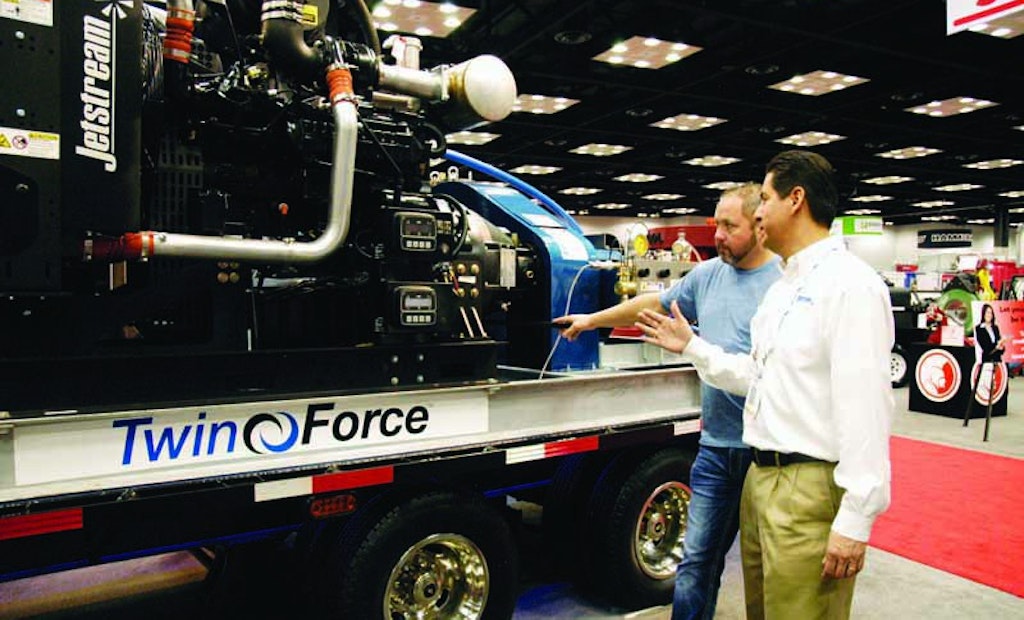
Interested in Waterblasting?
Get Waterblasting articles, news and videos right in your inbox! Sign up now.
Waterblasting + Get AlertsToday’s high-flow cleaning nozzles require some serious horsepower. Yet not every job needs a great deal of flow. Enter the TwinForce dual-pump waterblasting system from Jetstream, a subsidiary of Federal Signal Corporation.
The system can provide 650 hp for high-flow applications, but because that power is provided by separate 325 hp engines, it is also a good fit for smaller jobs. Jetstream displayed the TwinForce at the 2016 Water & Wastewater Equipment, Treatment & Transport Show.
“There’s a remote manifold at the end, so you can have 650 hp or you can have two 325 hp completely independent units,” says Jetstream engineer Eric Rust. “That’s a huge benefit.
Someone taking on a huge cleaning job can use all 650 hp, and then if they follow with a smaller job, they can split the units apart.”
The system, which has been on the market for almost two years, uses all of Jetstream’s standard components. It just doubles them.
“The name is of course the TwinForce because there is two of everything, packaged as one,” Rust says.
The system is built around Jetstream’s UNx fluid end, designed for easy servicing and fast conversion between operating pressures of 8,000 psi up to 40,000 psi. Dual fuel tanks provide eight hours of runtime between refuelings.
Rust says Jetstream developed the dual system primarily to serve industry trends. Instead of manually handling a cleaning tool, more of Jetstream’s customers are turning to automation. That creates an opportunity to do higher-flow applications, but achieving such flow also requires more horsepower.
“When using a tool, there’s a lot of thrust and 325 hp is basically all a person can handle. But then you’re limited to only so many gallons per minute,” Rust says. “If you’re going with automation, you can clean faster with more volume, but now you need the equipment that can run these big cleaning tools. If you have a tool that can produce 100 gpm, you need the horsepower to be able to get there.”
When operating as one, the dual units can provide up to 125 gpm at 8,000 psi. With a single 325 hp unit, 62 gpm is the maximum flow at 8,000 psi.
Though the goal of achieving more total horsepower was the impetus behind developing the TwinForce, it is the system’s versatility that has caught customers’ attention, Rust says.
“We didn’t go into the market focusing on versatility,” he says. “We went into the market saying, ‘We need to be able to feed this tool 100 gpm. This is how we’re going to do it.’ But a lot of our customer feedback has been about the versatility. It’s very unique that it is a dual setup. If I need to run a big cleaning tool that requires 100 gpm, I have that option. If have a smaller job that only requires 30 gpm, I can run just one of the 325 hp units and not waste all the extra fuel and water. And if one of the engines or something on one of the pumps were to go down, I still have the ability to clean with the other unit. Maybe it’s at a slower rate, but it’s functioning and I’m still able to do my job. I don’t have to wait to get another unit from the shop or have it repaired.
“Giving the system exposure to a whole bunch of people who didn’t know it existed is the benefit of coming to this show.” 800/231-8192; www.waterblast.com.





